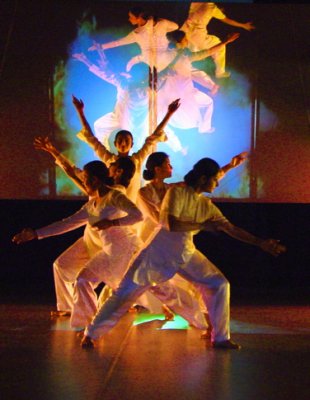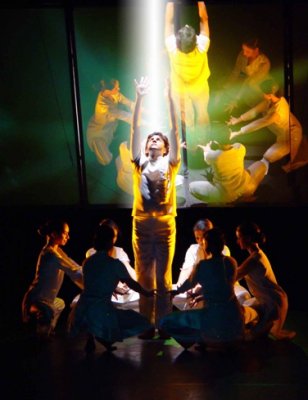Exclusive
interview with Chitraleka Bolar
by Lalitha
Venkat
How do you
strike a balance with your work in UK and Canada? Does it help/hamper you?
I am very much based in UK for
the past 26 years and have visited Canada only on a few occasions.
I have close friendship with some dancers in Canada but have not had chance
to work there as yet. In my capacity as chair for the South Asian
Dance Faculty at the Imperial Society of Teachers of Dance (ISTD) in UK,
I keep close contact with dance teachers in Canada as ISTD run dance examinations
worldwide.
How would
you define ‘Contemporary South Asian Dance’ in the UK and Canada contexts?
I can only comment about UK as
I have little experience of the Canadian context. There is no final definition
for the ‘Contemporary South Asian Dance’ in the UK, as it is a continually
evolving scene. Contemporary means different things to different
dancers. To some it means ‘of this time’ and to others it is an experiment
with style or combining different dance styles or working with different
music or ideas. So I do not think there can be a definition for this
as yet.
Do you feel
the available dance talent in UK is much more now than previously? There
was a time when noted dancer Shobana Jeysingh used to visit India and audition
trained dancers to intern with her. But this is not happening any more.
Yes, there is much more dance
talent available in UK now. Quite a few dance schools are producing
dancers of a good caliber and some go on to take up dance as a profession.
But there is no established career path and there are financial and job
security issues which make many of the talented youth a little hesitant
to take up the profession. This is the only reason companies visit
India to recruit dancers.
How do you
explain the current trend among a young generation of Asian dancers in
the UK who are taking to outward appeal in their work, with superb lighting
and external effects, more athleticism of movement but hardly any palpable
internalization…Do you feel they are out of sync with their cultural roots?
Each dancer has his/her own individual
interest in performance work. Some are committed to maintaining the
tradition and style and are working extremely hard towards it while others
push the boundaries of the dance style and theme ideas. Use of superb
lighting and effects to enhance the production is not just happening in
UK but appears to be a worldwide trend. Artists are now more aware
of techniques in multimedia that can lend to the production. Everyone
tries to make their art mean something to themselves influenced by their
own experiences and environment. I am sure there are artists who work in
the similar way in India and elsewhere in the world. I do not think
it is unique to artists in UK that are out of sync with the cultural roots
it is happening extensively in India too.
What is
your creative impulse behind ‘The Story of C,’ which you will be performing
at The Park’s THE OTHER FESTIVAL.
Tonie Stolberg, a senior lecturer
in science education at the University of Birmingham where Chitraleka Dance
Company is based, first instigated an idea back in 2001 for a science and
art project based on Bharatanatyam. I was inspired by an essay by
Primo Levi, an Italian chemist, who in his book ‘The Periodic Table’ sets
himself to imagine the life of a carbon atom. This was he says, his
first ‘literary dream’ that came to him during his imprisonment in Auschwitz.
I thought about this project on and off over a period of two years exploring
ways to bring the idea to the theatre. Finally, when the planning
was done, in October 2003 the company undertook a research and development
work to create and test-run the production on a regional scale. As
the company has a remit in dance-in-education, this subject also provided
an education perspective that could be of value to UK’s national curriculum
in secondary education.
Following the success of the pilot
tour, the company launched its national UK tour of the production in the
autumn of 2004.
Contact:
e-mail: info@chitraleka.co.uk
|


